Matador Network's Blog, page 2221
August 26, 2014
15 reasons to visit Michigan's UP
I am the quintessential city girl. Trains, 24-hour bodegas, street traffic, high-rise buildings — that’s MY thing.
So any visit to Michigan would understandably get me excited thinking about Detroit, the birthplace of the auto industry and home to Motown. But that’s not where I was headed on this trip; my destination was the western section of Michigan’s Upper Peninsula, a remote finger of land surrounded by enormous Lake Superior. It would be a new experience for me, but then again the most important lesson in traveling is to leave your inhibitions at the door — and that’s just what I did.
The western Upper Peninsula (the “UP”) is a mix of dense forest, lakes and rivers small and large, and quaint towns. For an area that has more trees than people (Copper Harbor’s population, for example, is 90), there’s no shortage of activities or sights. From exploring underground mines, dining on fresh-caught fish and other local specialties, to hiking through the Porcupine Mountains, I now understand why “Yoopers” (full-time residents of the UP) speak of Michigan’s Upper Peninsula with an incredible amount of love and pride. 
Andrea was a guest of Pure Michigan on this trip. All photos by author.
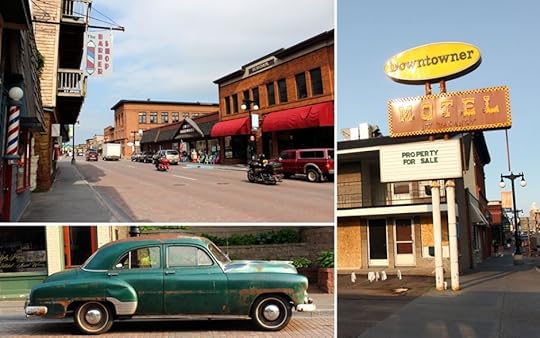
1
Vintage vibes in downtown Houghton
Downtown Houghton was built upon the enormous success of the copper-mining boom over 200 years ago. At one point, this small town had more millionaires than any other in the US. Today, with most of the original architecture still in place, you can enjoy an eclectic mix of restaurants, bars, shops, and local attractions. The vintage cars and signage add to the character of this town.

2
Food
I now understand what the term “food porn” means. According to the Yoopers, “you will never leave Michigan hungry.” Food is celebrated here—this place truly follows the farm-to-table lifestyle, offering diverse selections from the entire food chain. Fresh-caught fish guarantees a selection of the best eats: lake trout (grilled or smoked), honey-glazed salmon, whitefish, smelt, and anchovies. Add one of the local brews to dinner and you're experiencing what makes the UP so special.

3
The ultimate religious experience – Jampot
Where can you go to taste homemade jellies, cakes, cookies, bread, candies, and one-pound muffins made by Byzantine Ukrainian Catholic monks from the Society of St. John? Jampot is a pastry and dessert utopia. This popular little bakery fills up quickly with lines sweeping down the street. I fell in love with the rum-and-bourbon cakes, which are aged at least six months, and left with a bag full of jalapeño caramels and crabapple jelly.
Intermission
2
Meet the 12 host cities of World Cup 2014, Brazil
by Karin-Marijke Vis
17
11 ways to absolutely crush Cape Town in 5 days [pics]
by Ross Borden
2
6 things you’ll miss as a first-time traveler to Budapest
by Jennifer Walker

4
Pasties
You can’t leave the UP without eating a pasty. These meat pies are generously sized and packed with seasoned-meat and veggies. Cornish miners who immigrated to Michigan during the copper rush of the 1800s brought with them their national dish, and the Finnish later followed with their own version. This was a quick handheld meal for miners who couldn't leave the mines to eat. Pasties are a staple in the UP, and today you can try an array of flavors, from broccoli and cheese, pepperoni pizza (similar to a calzone), to my personal favorite, Thanksgiving in your hand—turkey, cranberries, and stuffing.

5
Brickside Brewery
Thanks to a hugely successful Kickstarter campaign in 2011, Brickside Brewery is the first microbrewery in Copper Harbor, Michigan. This tiny bar, in a town with a population of only 90 people, delivers fresh and flavorful beers that are a mix of handcrafted, bottled, and specialty brews. Try the sample glasses for $1 or get a whole pint for only $3.50.

6
The Porkies
Porcupine Mountains Wilderness State Park ("The Porkies") has an expansive 60,000 acres of woods, hiking trails, lakes, rivers, waterfalls, and beaches. Choose from hunting, fishing, camping, wildlife watching, or trekking the 90+ miles of trails. The natural beauty of this place is as stunning as the pride displayed by the community when talking about it to visitors.
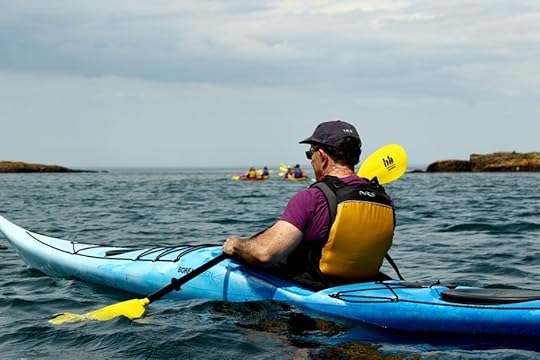
7
Sea kayaking with the Keweenaw Adventure Company
It took a group of 15 people and a lot of prayers to get me to attempt sea kayaking, but am I ever glad I tried it! The Keweenaw Adventure Company conducts tours for beginner-to-advanced kayakers. The Porter Island Paddle is a recommended 2.5-hour tour of the Copper Harbor section of Lake Superior.
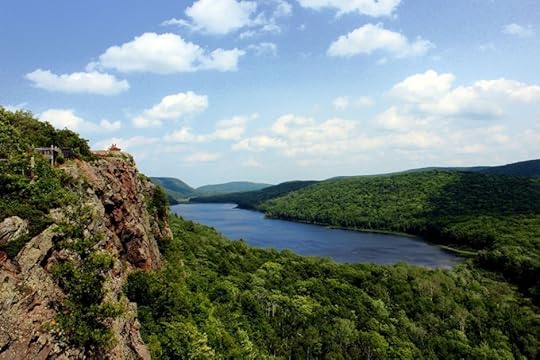
8
Lake of the Clouds
It's easy to see why Lake of the Clouds is considered a “must see” for first-time visitors to the Porkies. Located 300ft below a scenic overlook that's easily accessible by a 100-yard hike, I was blown away by the view of green trees spilling into sparkling blue water. Every season is worth the trip to the Porkies, especially in fall when the colors change from deep greens to autumnal reds, yellows, and oranges.

9
Manabezho Falls
Walking through Porcupine Mountains Wilderness Park, you will encounter some pretty spectacular waterfalls, the largest of which is Manabezho Falls on the Presque Isle River. Named after the Ojibwa’s spirit god, Manabezho Falls is easily accessible by trail.
Intermission
26
33 photos that will make you want to visit Thailand NOW
by Scott Sporleder
1
7 things you’ll miss when you leave Seattle
by Gina Corsiglia
1
24 hours in Fremont, Seattle
by Nicolle Merrill

10
Laurium Manor Inn
“Live like a copper baron, if only for one night,” proclaims the Laurium Manor Inn, a beautiful bed & breakfast located in the historic district of Laurium. Originally built for Thomas H. Hoatson, owner of the Arizona and Calumet Mining Company, in 1908, the inn is an impressive 13,000 sq. ft. building with 45 rooms all specially decorated with beautiful artwork and antiques personally selected by owners Dave and Julie Sprenger. Both enjoy giving history lessons on the inn while plying you with delicious food and drink. If you're lucky, you may be able to try some of Julie’s lavender-infused cookies she creates with her sister Cally under their label Sister Sister Foods.

11
The Mineral Museum of Michigan
The Mineral Museum of Michigan is like stepping into Tiffany’s on Fifth Avenue in New York. Housing an extensive collection of over 20,000 minerals and crystals, including Michigan’s pure copper (a six-foot sheet of White Pine Mine Copper that greets you as soon as you walk into the museum), this is also a great place to shop for gems, rocks, fossils, and mineral-infused jewelry.

12
Old Victoria
Fans of ghost towns, antique furnishings, and history will enjoy a trip to Old Victoria, an abandoned mining settlement with log cabins dating back over 100 years. Learn about the daily life of a miner and his family through an informative guide-led tour. The coolest thing about this tour is that you're actually able to touch the artifacts.

13
Sunset over the Portage Lake Lift Bridge
This bridge, the heaviest aerial lift bridge in the world, stands on the border between Hancock and Houghton, MI. It’s a multi-leveled construction that accommodates both vehicles and pedestrians and is the only entrance to the tip of the Keweenaw Peninsula other than by boat or plane.

14
Quincy mine
Learn about the copper rush of the 1800s and why copper mining was an integral part of economic growth in the US by going on a mining tour at the Quincy Mine National Historic Landmark District. Visitors can experience the historic artifacts in the museum and ride a cog-rail tram to the actual mine. The ride takes you down a hill that offers a spectacular view of the Portage Lake Lift Bridge. After the tram ride, you'll be escorted underground to the actual mine, where a guide will show the equipment used to dig for copper as well as give you a history of the Michigan mining industry.

15
Great Sand Bay
While driving along Lake Superior’s coastline in Keweenaw County, visit one of the largest areas of sand beach on the Keweenaw Peninsula, Great Sand Bay. Enjoy the seclusion of the beach, which is popular for sunbathing, swimming, and windsurfing. As a huge collector of minerals, I enjoyed the abundance of agate sprinkled along the shore. Even if you're just passing through, Great Sand Bay is worth a 10-minute stop to dip your feet in.

De-horning rhino in South Africa
Follow Matador on Vimeo
Follow Matador on YouTube
SOUTH AFRICA’S KRUGER NATIONAL PARK is one of the most popular game reserves in the world, and with the size of a small province, protecting all of the creatures and terrain within it is close to impossible. The country is home to the majority of Africa’s rhinos, and many of those reside in and around Kruger National Park.
Needless to say, the combination of these factors makes the Kruger ground zero for rhino poaching — more than 600 rhinos have been maimed and destroyed already in 2014.
Fighting rhino poaching has become a war for the people protecting these animals, and a game of high risk with very high reward for those engaging in the poaching, stealing, and dealing of the horns, which can be sold for hundreds of thousands of dollars on the black market.
With no real way of protecting rhinos from poachers in the wild, in real time, de-horning has come to represent the best, if not the most ideal, solution. The painless procedure is executed in a few well-timed steps:
A search helicopter locates an animal, and vets on board tranquilize it with darts shot from the aircraft.
The ground crew then rushes in to secure the darted rhino; an anchor rope is tied between a leg and a nearby tree to prevent self-inflicted injuries. The animal is blindfolded to keep it calm.
The majority of the horn is chainsawed off around 8cm from its base, removing the incentive for poachers to hunt, maim, and kill the animal.
A few short tests are done, from the checking of ear notches (to identify the animal) to the drawing of blood for DNA samples. The animal is then released.
After being microchipped, the horn is locked away in an unknown location.
On my outing near Hoedspruit with Tim Parker, head ranger of the community-driven organization Rhino Revolution, I experienced firsthand just how strong rhino are. One mother crashed into our Land Cruiser to protect her calf, and I saw a darted rhino fight the drugs in its system and jump up halfway through the procedure to stand its ground, sending us running.
What I came away with was an understanding that, while de-horning is tragic to witness, it might just save or prolong the species’ existence. The very thin line between these powerful animals and their fragile survival makes you realize just how serious the rhino war is. 

Photo: Author

8 signs you're from the Philippines

Photo: John Christian Fjellestad
1. You’ve taken a jeepney ride.
The jeepney, or jeep, as we call it, is the cheapest and most common mode of public transport in the Philippines. A jeep is similar to a pickup truck. The driver and two other passengers are seated in front. The back has no rear door, but it has a roof and two bench seats facing each other on the left and right sides. You say “bayad” as you pass along your fare to the passenger next to you, who then passes it along until it reaches the driver.
You may be the last person in, squeezing yourself between two other passengers. You may be slipping and sliding and holding on for dear life to the handrail above you as the driver races through traffic. You may be dodging awkward stares from the person across from you. Your shoulder may be used as a pillow by the snoring passenger next to you. Whichever passenger you may be, a jeepney ride is always an adventure in itself.
2. You eat with the seasons.
The hot months of March to May will make you crave halo-halo (“mix-mix”). This is a
combination of sago, gulaman, langka (jackfruit), buko (coconut), kidney beans, and basically anything else you can think of. It’s topped with shaved ice and covered with evaporated milk. Leche flan, ube (purple yam), or a scoop of ice cream are sometimes added as final toppings. Mixing is part of the fun as, oddly enough, all these ingredients come together into a sweet and delicious blend.
The rainy months of June to September warrant a bowl of tinola. Chicken, unripe papaya, and sili leaves are cooked in ginger-flavored broth. The heat of the soup and the spicy kick of ginger make this a perfect dish for the rainy season.
3. You agonize over being the last person to get that serving plate.
When you’re the last person to get passed a plate of food, you can take some of what’s on it, but make sure to leave a teeny-tiny bit on the plate. It would be quite embarrassing to be the person who got the last of that delectable lechon without leaving some for anyone else.
4. When getting the check at a restaurant, you signal to the waiter with your thumb and index finger, tracing a rectangle from the center outwards until your thumb and index finger meet.
And we call for the bill, not the check.
5. You point with your lips.
Someone comes up to you asking for directions, and you say, “Ah, doon” (Oh, there). But instead of using your index finger to point them towards the right path, you pucker your lips and move them outward to point. Your eyebrows move up while doing this. Hopefully the person gets it and will head toward where you instructed them to go.
6. You have superstitious beliefs, however mundane they may be.
Your itching palm is a sign money is coming. Dreaming of losing a tooth will mean the death of someone close to you. Don’t clear the table while someone is still eating, or that person will never get married. When someone leaves while you’re eating, turn your plate to avoid anything bad happening to that person. Don’t go straight home after attending a wake — drive around so the spirit of the dead won’t follow you home.
I mean, there’s no harm in believing, right?
7. You love pasalubong.
My mom used to bring home boxes full of pasalubong when she was working abroad. These gifts could be anything from new shoes and clothes for me and my older brother, to canned goods, lotion, soap, and chocolates for my aunts and uncles and cousins.
Relatives and friends will ask for local delicacies or native artifacts as pasalubong from wherever you’re traveling. Filipinos are always be happy that you’ve thought of them, and that in this indirect way, they’ve become part of where you’ve been.
8. You find ways to smile no matter what tragedy hits you.
You may have gone through typhoons, earthquakes, volcanic eruptions, and even the dire
consequences of flawed political decisions. However badly this affects you, you still find plenty of reasons to smile. For one thing, you’re still alive. And for Filipinos, that is what matters most. 

30 images of American wildlife
NORTH AMERICA IS HOME to some incredible wildlife. City dwellers such as myself typically only see rodents like rats and squirrels, or domesticated animals, but our continent is full of strange and incredible creatures that know enough to avoid our cities.
We’ve done a pretty decent job killing a lot of the animals that used to populate this continent — it’s believed not only that the arrival of Europeans coincided with the wiping out of many American species, but that the arrival of humans, period, tens of thousands of years ago led to the extinction of a lot of our big animals, like the giant sloth and wooly mammoth.
But plenty of spectacular species are still around, despite our best efforts, and in the past half century a renewed focus on issues like conservation has helped bring many of these animals back from the brink. Here are some of the North American continent’s most incredible wildlife. 
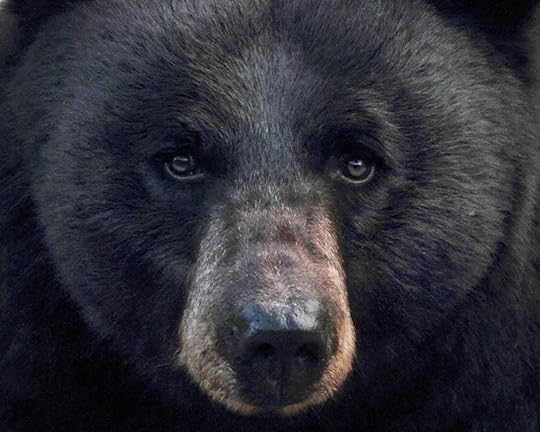
1
Black bear
Though the smallest of America’s bears, the black bear is the most widely distributed, and thus is the least vulnerable. They’re mostly found in Canada and Alaska, but also inhabit wooded areas pretty much anywhere in the US and down into Mexico.
Photo: Pat Gaines

2
Moose
Though primarily thought of as Canadian or Alaskan animals, moose are actually found in Scandinavia and Russia as well. We'll keep claiming them as our own, though.
Photo: U.S. Fish and Wildlife Service

3
Brown pelican
Though typically identified with the United States—namely the states on the Gulf of Mexico—brown pelicans can be found all the way down to South America and the Galapagos Islands. They feed primarily on fish and catch them by diving from above.
Photo: Andrea Westmoreland
Intermission
1
24 hours in Fremont, Seattle
by Nicolle Merrill
26
33 photos that will make you want to visit Thailand NOW
by Scott Sporleder
1
7 things you’ll miss when you leave Seattle
by Gina Corsiglia

4
Polar bear
Though often considered the poster animals for climate change, polar bears are actually classified as “Vulnerable,” which is the lowest level of concern in terms of conservation status. A decrease in hunting has even led to recovery in some populations.
Photo: John

5
Bald eagle
America’s national bird is particularly photogenic. They were driven to the point of near-extinction in the continental United States at the end of the 20th century, but have since made a comeback. There are a ton of them in Alaska, and you can occasionally spot them pretty much everywhere else in the US except Hawaii.
Photo: Jason Mrachina

6
Monarch butterfly
Monarch butterflies are among the most famous migrators in the world, going from Canada to Mexico in the late summer, even though the time it takes to travel that distance is actually longer than their average lifespan.
Photo: Joel Olives

7
Gray wolf
Though the gray wolf was basically exterminated in the United States at one point, efforts to reintroduce them to the environment are now proving successful—and they’re largely coming back on their own. There’s now a sizable population in Yellowstone National Park.
Photo: Steve Jurvetson

8
Bottlenose dolphin
The bottlenose dolphin is hardly common only to the Americas, found virtually everywhere in the world’s non-Arctic Oceans. They're known for being the second most intelligent creatures in the world (behind mice, according to Douglas Adams), and it's been shown that they can transmit cultural knowledge between generations.
Photo: Juanma Carrillo

9
Painted bunting
These colorful birds—relatives of the cardinals—breed in the Southeastern United States and then migrate south into Mexico, Cuba, and a number of other Caribbean islands for the winter.
Photo: Dan Pancamo
Intermission
9
A year in photos: The extreme light changes of Antarctica
by Ben Adkison
4
11 portraits that reveal the real faces of the homeless
by Joshua Thaisen
10 under-the-radar spots to check out in western Brazil
by Karin-Marijke Vis

10
Ocelot
Ocelots are found mostly in Central and South America and Mexico, but are occasionally spotted in Texas and Arizona. Salvador Dali and Gram Parsons famously kept them as pets.
Photo: Daniele Pacaloni

11
Manatee
Manatees are another particularly intelligent sea mammal, found largely in the Caribbean, though also in the Amazon and in West Africa. They are vulnerable to extinction, thanks mostly to humans. They’re slow moving and are often hit by boats, and they’re also impacted by habitat destruction.
Photo: Ahodges7

12
Caribou
What we call caribou in the Americas are identical to the reindeer of Europe and Asia. While occasionally found in continental US—mostly in the Northwest—they mainly reside in Canada and Alaska.
Photo: Andrew Russell

13
Arctic fox
The arctic fox can be found in basically any tundra region. In North America, it appears pretty much exclusively in Canada and Alaska. Its fur changes from season to season: white in the winter, brown in the summer.
Photo: Will Brown

14
Alligator snapping turtle
Alligator snapping turtles are mostly found in the south central United States, namely in Texas and the plains states. Their bite can go straight through a broom handle, and has been known to take human fingers clean off.
Photo: Joachim S. Müller

15
Coyote
Unlike wolves, coyotes have thrived as human civilization has spread, as they are willing to live in urban areas. Many Native American tribes cast coyotes as trickster figures in their mythology.
Photo: Todd Ryburn
Intermission
3
20 portraits from the enduring Caribbean
by Daniel Chafer
3
Wintertime in Quebec City is kinda awesome
by Scott Sporleder
17
11 ways to absolutely crush Cape Town in 5 days [pics]
by Ross Borden

16
Bison
Probably the most iconic American animal, the bison—inaccurately referred to as a “buffalo”—had numbers around 60 million before the Europeans. In 1890, it’s believed they were down to about 750 total. They have since somewhat recovered to about 360,000.
Photo: Eric Vondy

17
California condor
California condors are another great conservation story. They became extinct in the wild in the '80s, but have since been reintroduced using the population living in captivity. Their numbers are still extremely small—there’s thought to be fewer than 500 total, with around 200 of those living in captivity, but it’s a comeback nonetheless.
Photo: Isaac Hsieh

18
Gray fox
The gray fox is found throughout the continental US and Central America, and can live on anything from mammals to insects. They are one of the only surviving members of the most primitive canine genus.
Photo: Gregory "Greg" Smith

19
Alligator
The American alligator is the world’s largest alligator species, and is found mostly in the Southern states, particularly in swamplands. Their numbers were greatly reduced as a result of over-hunting, but conservation efforts have led to their recovery and removal from the endangered species list.
Photo: Eric Isley

20
California sea lion
Though named California sea lions—and probably best known for their colonies off of Pier 39 in San Francisco and in the Channel Islands—they can actually be found all along the west coast of North America, down past the Gulf of California in Mexico. They’re smart animals and have been trained for tasks by the US Navy, presumably with laser beams attached to their heads.
Photo: Bill Gracey

21
Tufted puffin
Tufted puffins make their home in the North Pacific and are commonly sighted in coastal Alaska and British Columbia, occasionally wandering further south as far as California. They feed on fish and squid.
Photo: Pat Teglia

22
Rattlesnake
Rattlesnakes cover 32 different species of snake, all with the distinctive rattler on their tail. The Mojave rattlesnake (pictured) is particularly dangerous because its venom is not solely a hemotoxin, but also contains neurotoxins.
Photo: Tom Sprinker

23
Loggerhead turtle
Found throughout the world’s oceans, the loggerhead is probably most common in America on the Atlantic side. They are an endangered species, harmed most often as a result of destructive fishing practices.
Photo: SlightlyOutOfBrussels

24
Canada lynx
This subspecies of lynx is about twice the size of your house cat, with thick silverish fur and tufted ears. Its range covers much of Canada and Alaska, and it has notably undergone a reintroduction program in Colorado.
Photo: Eric Kilby

25
Barn owl
Barn owls inhabit much of our planet, with the exception of parts of Africa and most of Asia. They eat mostly rodents and small mammals, which is why they would be known to hang out in barns.
Photo: DarrelBirkett

26
Armadillo
Armadillos—“little armored one” in Spanish—originated in South America, but have long since migrated up to North America and the southern United States. They could be considered the "state roadkill animal" of Texas.
Photo: DMangus

27
Kodiak bear
The Kodiak bear was initially just a typical grizzly bear, until the forces of speciation on the Kodiak archipelago in Alaska caused them to grow larger. They’re now technically considered a separate species of grizzly and are the biggest bears in the world behind polar bears.
Photo: Yathin

28
Puma
"Puma" is actually a word used to refer to several types of mountain lions. Cougars, which are the American native, have the widest range of any large mammal in the Western Hemisphere, and can be found from Canada all the way down to South America.
Photo: Art G.

29
Gila monster
Gila monsters are one of only two poisonous lizards in North America, and exist mostly in the Sonoran Desert. They’re slow moving and tend to not attack or come near humans, and their venom, while very poisonous, is delivered in small enough doses to rarely kill.
Photo: Joachim S. Müller

30
Bobcat
Bobcats are found throughout most of the United States, thanks to the fact that they are incredibly adaptable and can even live in suburban or urban areas, though of course they prefer more remote habitats.
Photo: Valerie

August 25, 2014
Off the beaten path in Peru

Photo: erin
1. Spend time on the shores of the Madre de Dios.
While the majority of travelers hoping to experience the Amazon head straight to Iquitos, a (much) smaller number visit the Amazon regions surrounding the Madre de Dios River, namely Tambopata National Reserve and Manu National Reserve. Most guest lodges are about an hour to three hours downstream from Puerto Maldonado, the nearest town.
Slide your feet into high rubber boots to trek through the mud, explore the jungle (by flashlight at night for the best sightings), paddle around hidden lakes, and fish for piranha. You can spot the shining eyes of the caimans in the Madre de Dios via spotlight during evening boat rides, listen to the locals’ eerie stories about the Chullachaqui, and even participate in an ayahuasca ritual. (Just make sure you do your research prior.)
Don’t expect to be updating your Instagram during this leg of your trip.
2. Arrange a homestay in the village of Vicos.
Vicos is a small village at the base of the fourth-highest mountain in the Western Hemisphere, Huascarán. The population of Vicos is a little over 1,000, made up primarily of agriculturists. By arranging a homestay in Vicos, you’ll live just as the locals do. Drink coca tea. Work on the farm with the family, cutting wheat and herding cattle. Learn the traditional cooking techniques and taste the cuisine, which includes papakashki, an Andean potato soup.
Exposure to the lifestyle of a town that hasn’t been affected by Peru’s tourism boom is an experience most will never have the chance to enjoy.
3. Visit Choquequirao, the Machu Picchu no one’s heard of.
Nearly everyone who visits Peru makes Machu Picchu the main stop of the trip. It’s a monumental destination, but you’ll be sharing it with thousands of other tourists.
Choquequirao, on the other hand, is a rediscovered ruined Inca city in the Cusco region, reached by a strenuous two-to-three-day hike from the village of Cachora and visited by only a handful of adventurers daily. Similar to Machu Picchu in overall structure, Choquequirao is still being excavated, and archaeologists can sometimes be seen working at the site.
Guides are readily available, but you can also go on your own. Just remember to bring appropriate provisions, including a tent, a warm sleeping bag, and some sturdy boots.
4. Make your way to Lake Akilpo via Huaraz.
A little-known trek, the journey to Lake Akilpo from Huaraz in Peru’s Ancash region isn’t an easy one, due in part to the altitude. The lengthy hike brings travelers through a mountain pass, a forest of quenual, and an impressive valley.
Unless you’ve been climbing mountains at altitude regularly, you’re likely going to take it slow and get plenty of rest on the overnight. Day two entails a roughly two-hour hike to reach Lake Akilpo, a glacier-fed lake reminiscent of Canada’s Moraine Lake with its nearly fluorescent color. Bring a friend or two, because you won’t see too many faces on this journey.
5. Visit Cusco’s Baratillo Market on a Saturday.
You’re probably rolling your eyes and thinking, “Cusco’s path is as beaten as ever.” And, yes, much of it is. Plaza de Armas has a McDonald’s in it. There’s no argument there.
Roaming on a Saturday? Find the Baratillo Market. You’ll see every sort of ware you can imagine, from jeans to toasters, but not as many tourists as you’d expect. Show up early. Just make sure to keep a hand on your wallet.
Not looking to roam so far off the beaten path? Give the San Pedro Market a visit and try the caldo de gallina for lunch.
6. Take in the views of Lake Titicaca from Llachón.
If you’re looking to experience Lake Titicaca without the commotion of Puno, visit Llachón, a village about 75km to the northeast. Visitors can typically show up accommodation-less with no worry.
The quiet village isn’t a typical tourist haunt, and the vibe reflects that. Sleep in a small guesthouse for the evening and spend your morning kayaking on the lake. The experience is rather refreshing if you’ve seen the Disneyfication of Lake Titicaca and its floating islands near Puno, or the party scene in nearby Copacabana, Bolivia.
7. Appreciate the architecture of Cajamarca’s churches.
A small city in the Peruvian highlands, Cajamarca isn’t visited by many tourists but remains well known for its architecture — in particular, six Christian churches built in the Spanish colonial style. Three of them have pretty impressive facades.
The city is also known as a center of Carnaval, when Peruvians and (some) tourists visit the city to celebrate before Lent begins. 

Lake of Dreams, Burning Man
Follow Matador on Vimeo
Follow Matador on YouTube
BURNING MAN HAS OFFICIALLY BEGUN, and I’m excited to read the crazy stories, flip through awesome photography, and watch interesting films about peoples’ experiences, like this one produced by Roy Two Thousand. Burning Man is often portrayed as this chaotic, hedonistic festival of drugged-up hippies and corporate-monkeys-turned-soul-searchers, but this video strips away the overwhelming details, and shows Burning Man for what it truly is — a time and place for people to come together and experience moments that are meant to remain in Black Rock City, forever. 

How to decide where you've been

Photo: Kevin Tao
I was at a protest in Columbus, Georgia, with my older sister, and we were trying to get back to our hotel. I got lost, turned left, and was suddenly in Alabama. I’d known Columbus sat right on the state border, but I hadn’t known this bridge was involved. I did a U-turn, and within three minutes we were back in the great state of Georgia.
“Well,” I said, “guess I can check Alabama off my list.”
“No you can’t, Matt,” she said. “Taking a wrong turn into a state doesn’t count as having been to the state.”
“But I was physically in it!”
“Did you step out of the car?”
“No, but — ”
“You never set foot on Alabaman soil. You weren’t in Alabama.”
“But what if I’d driven across the entire state and had never gotten out of my car? Would that have counted?”
She paused. “Well, you didn’t do that. So you haven’t been to Alabama.”
I’ve since learned this debate’s been had by every traveler I’ve ever known, and that absolutely no one has the same set of rules. My rule is that if I’m physically in a state or country and am either touching the ground or in a vehicle that’s touching the ground, then I’ve been in that state or country — unless I’m in the airport for a flight connection and at no point walk outside of security. So while I’ve been to the Cologne Airport, I’ve never been to Germany.
“That’s ridiculous,” my fiancee says, “You’ve been in the country.”
“Airports are the same everywhere,” I say. “The Hofbrauhaus in Northern Kentucky is closer to being in Germany than the Cologne Airport is.”
My fiancee’s rule is a little different from mine: She has to spend a night in the place in order for it to count. This means that while she’s lived in DC for eight years and has driven home approximately once a month to see her family in New Jersey, every single time spending 10 minutes to an hour caught in traffic in that little northern sliver of Delaware, she’s never actually been to Delaware.
I mean, I can’t blame her. I’m never gonna spend an entire night of my short, precious life in Delaware, but I’ll be damned if I’m not going to take credit for being there.
A friend of mine says you have to eat a meal in the state, but I don’t think this is any better. You can get a Big Mac at a rest stop and say, “Oh yeah, I’ve been to Nebraska.” He counters by specifying you have to go to a local restaurant, which is also ludicrous. What if I happen to have a deathly serious hankering for a Bloomin’ Onion, but I’ve never been to Iowa before? Must I ignore my body’s needs in order to be in a place? Are the soggy onion rings at Flo’s Diner in Des Moines the penance I have to pay to have “been” somewhere?
Another friend: “You have to have at least one interaction with the locals.” So if I’m driving at 3am through a small West Virginia town and stop to get gas, I’m obligated to call the poor sleeping attendant out of the booth to pump my gas for me so I can have my local flavor? How demeaning is that?
I reject that philosophy. I’ve been to Vatican City. I’ve stood in the Sistine Chapel. But there are slightly fewer than 800 people living in Vatican City, mostly Catholic officials. They don’t hang out in the Sistine Chapel and chat it up with young apostates. In fact, I don’t believe I spoke to a single person outside of my tour group — led by a Scotsman, not a Vaticanite — for the entire time I was in the City. Have I not been to Vatican City, despite standing in St. Peter’s Basilica and the Sistine Chapel, soaking up their wonder?
My dad has the simplest solution, and that’s if you’ve physically been in the state or country — asleep or awake, on a plane, on a train, in a car, for two seconds or two years — you’ve been there. And while that seems like it’s probably the most reasonable measurement, I always secretly wonder if he chose that rule so he could count that connection in Little Rock and never have to go back to Arkansas. 

Life without money
Follow Matador on Vimeo
Follow Matador on YouTube
THE BARTER ECONOMY FASCINATES ME. I think it’s a practical solution to a lot of problems, but I’m not sure I’d be able to live off of it for over fifteen years. I guess that’s why I admire Heidemarie Schwermer so much — at 69, she’s been able to live without spending or receiving money, for over fifteen years. She lives by a “zero waste” policy, where she trades clothing and goods for the things she needs, and is able to live a minimalist, nomadic life by doing odd jobs, or housekeeping, in exchange for room and board.
Schwermer leads a simple life, and she feels better about herself because of it. I guess if you have nothing to lose, and everything to give, you can’t get that upset. Check out more about her film and lifestyle here. 

4 things Americans say to Brits

Photo: Petras Gagilas
When you’re an American living in the UK, you start to tire of discussions around the differences in language and culture. Ooh, I say aluminum differently than you do! Ooh, I call pants underwear and trousers pants! Shocking! Ooh, my country likes to imprison people and stockpile small arms while yours…uh, I guess plays soccer and calls it football! Weird!
It’s the exact same when Brits come to the States, I’m sure, and I’d imagine it’s just as tiring for them. But these conversations, sadly, are to some extent inevitable.
That said, there are a few things I’ve learned my fellow Americans and I just shouldn’t ever say to Brits, whether out of courtesy or a desire to not be incredibly awkward or insulting.
1. “English accents are sexy.”
First of all, as a pickup line, this is just unbelievably lazy. You know why? Assuming you’re in the UK, virtually everyone in the bar has an English accent. You just don’t pull out such an indiscriminate line unless you’re a total creeper. And if you’re in the US and you’re using this line, guess what? They already know. They’ve been hearing it left and right since the second they touched down at LaGuardia.
Secondly, the “English accent” is a weak umbrella term for an incredibly broad range of dialects. Small as that country is, it has a huge number of different accents. And some of them aren’t remotely sexy. If you can narrow it down and say something like, “Scouse accents are sexy,” (which they are most definitely not), then at the very least you’ve scored points for getting the accent right.
Finally, keep in mind that literally no Brit finds American accents sexy. To them, we all sound like Forrest Gump. So when you go up to someone and say, “English accents are sexy!” they’re basically hearing, “Garsh! You shore do talk purty!”
2. “We bailed you out in World War II.”
American history classes have a tendency to overemphasize the role of the US in World War II. Yes, we did great things, and yes, our involvement certainly speeded the war’s end. But for whatever reason, this turns us into complete chodes when we talk to Brits. First of all, let’s be clear: Our war experience was far less traumatic than Britain’s. Aside from the fact that World War II destroyed their empire (which, honestly, was probably a good thing), nearly 1% of the UK’s total population was killed in the war, while in America the number was about a third of that.
Also, the Nazis bombed the shit out of their cities. Unless you were in Pearl Harbor, that didn’t happen in America in World War II. US soldiers on the front lines didn’t have to worry as much about their families at home.
The British people are still quite proud about holding off the Nazis single-handedly after the rest of Western Europe fell — and their narrative of World War II always seems to mention how we dragged our feet getting into it. Regardless, to declare we came over and saved the day is a selectively simplistic way of putting it, and it’s just a generally shitty, disrespectful thing to say.
3. “Our football is better than your football.”
Virtually every non-soccer-loving American I know does this when they meet Brits. They start talking about “football” and how our football is better, and how theirs is boring. Or about how cricket is the dullest and most inexplicable sport on the planet. The reason this is obnoxious is that it opens the door to these jocky, gonad-swinging debates about whose culture is better and which sport has more of a right to call itself “football” (hint: We always lose this one, because it’s clearly soccer).
The point of speaking to someone from another culture or being in another culture isn’t to compare it to your own and decide which is better. Cultures aren’t laid out on some sort of bigoted March Madness bracket. They’re just different. We’ve got really cool stuff about our culture. They have really cool stuff about theirs. And sometimes, to fully appreciate a part of a culture, you have to have grown up in it.
So, yeah, maybe you don’t find cricket or soccer exciting. But no one gives a shit. Your enjoyment isn’t a prerequisite for others’ enjoyment. Also, shut up about their food.
4. “I thought all Brits had bad teeth.”
Jesus, what are you, a child? Don’t comment on people’s physical appearance, even if you’re hiding behind the foot-in-mouth, “It’s nothing personal! All of you people are like that!” excuse.
The “Brits have bad teeth” stereotype is obviously an exaggeration perpetuated by American pop culture, and, hey, even if it were accurate, at least they wouldn’t have to spend their formative years in mortifying braces. Also, when they get sick, they don’t end up in hundreds of thousands of dollars of debt. So to each their own. 

15 awe-inspiring forests [pics]
Forests make up 30% of Earth’s total land surface. While many people imagine forests as endless clusters of evergreen trees, this type of ecosystem is actually incredibly diverse — some different types include boreal forests, temperate deciduous forests, temperate coniferous forests, tropical forests, and subtropical forests (including subcategories of these as well).
Not to mention the types of forests that aren’t considered true forests, such as those found in swamps, underwater, and even those made of stone.
Check out these 15 forests from around the planet and see for yourself how diverse they can be. 

1
Sagano bamboo forest (Japan)
The bamboo forest of Sagano can be found in the Arashiyama district of Kyoto, Japan. The paths that cut through the groves are ideal for walking or biking. The bamboo stalks sway in unison when there’s a light wind.
Photo: Weije

2
Avenue of the Baobabs (Madagascar)
A grouping of 20 to 25 baobab trees along a dirt road in the Menabe region of western Madagascar makes up the Avenue of the Baobabs. The trees measure about 30 meters in height and have become something of a tourist attraction in the region.
Photo: Frank Vassen

3
Muir Woods National Monument (United States)
California redwoods, also known as coast redwoods, cover 240 acres of the Muir Woods National Monument, a short drive from San Francisco. The area is frequently enveloped by a coastal marine inversion layer carrying thick fog.
Photo: Justin Brown
Intermission
20
California’s giant redwoods, the tallest living things on our planet
by Hal Amen
7
59 incredible photos of America’s 59 national parks
by Matt Hershberger
6
How many of these 39 natural wonders of the world have you been to?
by Matt Hershberger

4
Amazon Rainforest (South America)
Also known as the Amazon jungle, the Amazon Rainforest covers the majority of South America’s Amazon Basin (spanning eight countries and 2,670,000 square miles). The Amazon makes up half of the planet’s total rainforest, making it the largest in the world.
Photo: Sara y Tzunki

5
Heron Pond (United States)
Found in Illinois, Heron Pond is home to a cypress swamp consisting mainly of cypress trees along with a smaller number of ferns, willows, and other plant life. The trees grow in holes within the limestone bedrock, which breaks down over time and allows the trees to set roots ever deeper.
Photo: Thomas Gehrke

6
Dragon blood tree forest (Yemen)
Forests of Dracaena cinnabari (also known as the dragon blood tree), indigenous to Socotra Island in Yemen, are found all over the four-island archipelago in the Indian Ocean. The tree is known as the dragon blood tree due to its red sap, which is still used as both a dye and a medicine.
Photo: Rod Waddington

7
Black Forest (Germany)
The Black Forest (Schwarzwald in German) is a densely wooded area in the German state of Baden-Württemberg. The Rhine Valley borders the forest to the south and west. The Black Forest is the setting of many a Brothers Grimm fairytale.
Photo: Albtal.Schwarzwald

8
Ancient Bristlecone Pine Forest (United States)
Found in California’s Inyo County, the Ancient Bristlecone Pine Forest is typically open from mid-May through the end of November. The forest is home to Methuselah, a 4,845-year-old Great Basin bristlecone pine, one of the oldest living things on Earth.
Photo: Rick Goldwaser

9
Banff National Park (Canada)
Banff National Park is home to endless coniferous forests, as well as brilliant glacial-fed lakes and meadows. The forests of Banff are generally part of the sub-alpine region, which makes up 53% of the national park.
Photo: James Wheeler
Intermission
2
41 photos of the world’s most spectacular waterfalls
by Rory Moulton
40 most scenic beaches worldwide
by Matt Hershberger
7
Unearthly images of the world’s largest non-polar icefield
by Colin Delehanty

10
Stone Forest (China)
Not your typical forest, the Stone Forest in China’s Yunnan Province is made of towering limestone structures that resemble petrified trees. The formations are assumed to be over 270 million years old.
Photo: Aftab Uzzaman
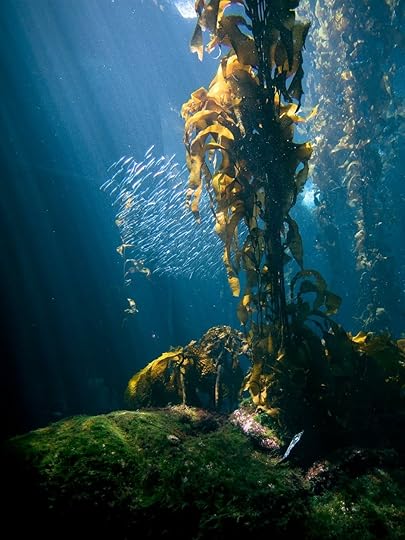
11
Kelp forest (United States)
Found in nature and aquariums alike (this photo was taken in the Monterey Bay Aquarium), kelp forests are underwater high-density areas of kelp. The ecosystem of a kelp forest is complex, with different types of kelp living in each canopy. Many people theorize that the Americas were originally colonized by fishing communities who followed the movement of Pacific kelp forests.
Photo: Ryan Carver

12
Monteverde Cloud Forest Reserve (Costa Rica)
The Monteverde Cloud Forest Reserve, founded in 1972, is a nature reserve in Costa Rica’s provinces of Puntarenas and Alajuela. Over 70,000 people a year visit the reserve, which contains some of the most diverse flora and fauna on the planet.
Photo: Sergio Quesada

13
Mangrove tunnel (Honduras)
Seen from the Caribbean to the Philippines, mangrove forests consist of gatherings of trees that grow in tropical and subtropical saline coastal habitats. Other accessible examples exist in the Florida Keys and much of Sumatra and Borneo.
Photo: Woody Hibbard

14
Pando (United States)
Also known as the Trembling Giant, Pando is actually a single Populus tremuloides or aspen that's connected underground by a complex root system. It's believed that the roots themselves are over 80,000 years old. Located near Fish Lake in Utah, Pando is considered the heaviest known organism in the world, as well as one of the largest and oldest.
Photo: USDA

15
Zhangjiajie National Forest Park (China)
The Zhangjiajie National Forest Park sits within the Wulingyuan Scenic Area of Hunan. The park is best known for the quartz-sandstone pillars that tower above the surroundings, a result of centuries of erosion. It was declared a Unesco Global Geopark in 2004.
Photo: Viktor Lovgren

Matador Network's Blog
- Matador Network's profile
- 6 followers



